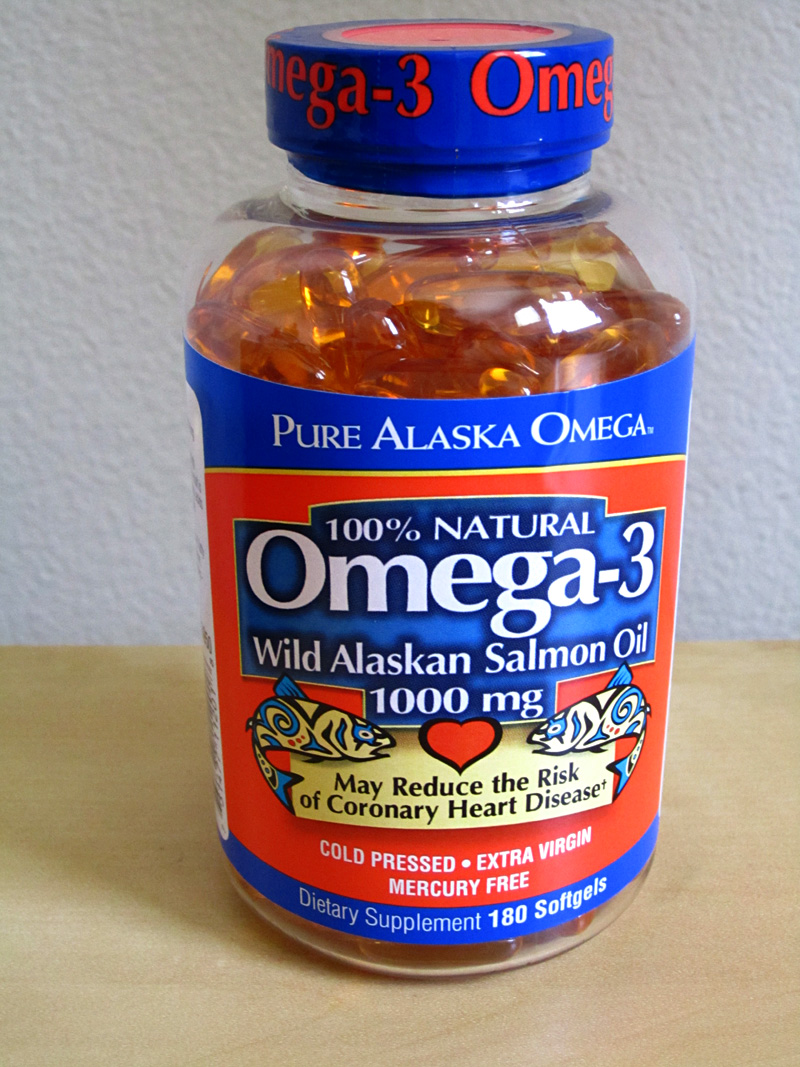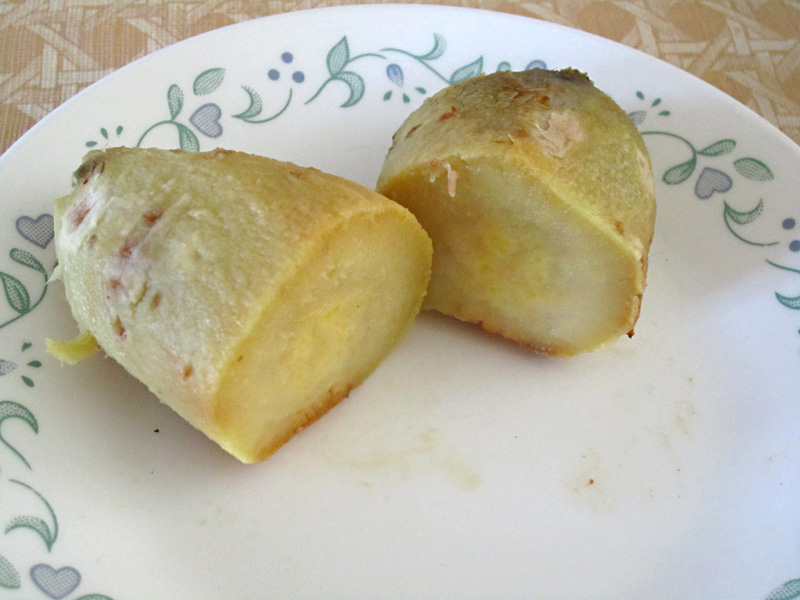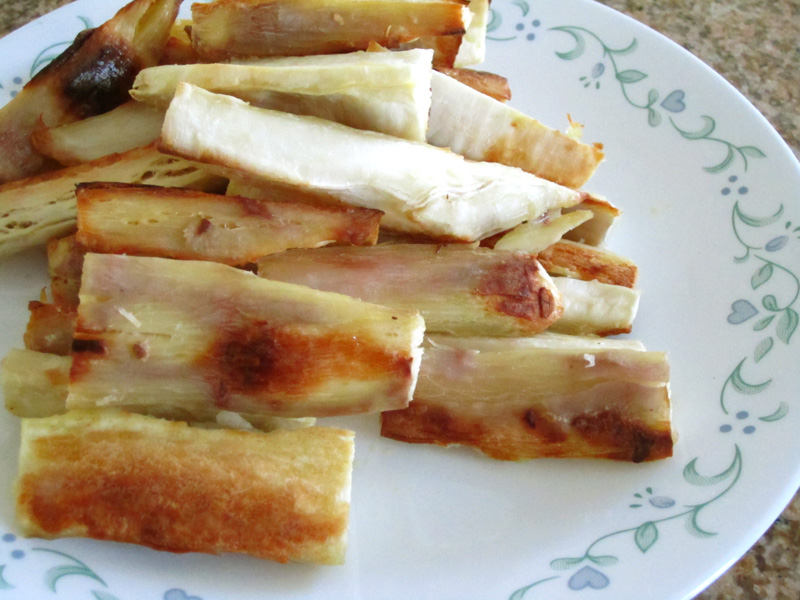Omega-3 and Cassava Facts
Happy long weekend for those who are in the US as this coming Monday is Memorial Day Holiday. What are you up to? I’m going to hang out with my gals tomorrow lunch as part of our usual monthly gathering and also to celebrate two of our friends’ birthdays Ay and Yen (obviously not their real names).
We decided to do our weekly grocery shopping today, figured the market will be very crowded over the weekend due to the holiday (BBQ party anyone?).
On our way, we stopped by Costco to get some non perishable essentials (I usually don’t shop grocery in bulk since we only have 3 people in the house) and I spotted this
Wild Alaskan Salmon Oil

After manufacturing instant rebate, this cost me about $14.00 (originally $16.00)
Ingredients: Fish oil (100% natural, from wild Alaskan Salmon (softgel (gelatin, glycerin, water), Vitamin E (as D-alpha tocopherol).

Not too shabby huh? I’m not a scientist and have ZERO knowledge of drug composition but overall the ingredient list look pretty clean to me. I also visited the manufacturer, Alaska Protein Recovery website to read more info about them.
Here’s the snippet part of their salmon oil processing:
APR’s brand of wild salmon oil, Pure Alaska Omega, is made using a gentle, natural, low temperature process, in a manner very similar to that used for extraction of extra virgin “cold pressed” olive oil. Our process does not thermally, or otherwise, degrade the many oil soluble micro nutrients or the LC-PUFA’s found naturally in Alaska salmon. Our oil is separated by centrifugation at the earliest stages of our fish hydrolysate production process, immediately after the grinding and heating of the salmon. The separation of the liquid phase from the solid phase of a salmon takes place in a food grade decanter (left). The liquid, which contains water, water-soluble proteins, micronutrients, as well as the oil, is immediately passed through a food grade high speed centrifuge (right) which separates the salmon oil from the water. The oil is immediately packed in sterile 1,000 liter IBC bins.
Read more here
Suggested use: take 2 softgels a day or take one with breakfast and another one with the last meal of the day.
For that price, I’m pretty happy to get this Omega 3 supplements, since I consume quite a lot of chicken (see my big chicken recipe list?) compare to ruminants like beef, lamb, elk etc, let alone grass fed ones. Getting wild caught fish is pretty tricky as well and majority of fish that are sold around my regular grocery stores are mostly farm raised, which is something that we should avoid at all costs. Besides wild caught fish is darn pricey and they don’t hold my hunger as well compare to other meat.
Ok enough talk about supplements. Let’s move on the the real food 😀
Today’s lunch was super yummy big ass salad of spring mix, roasted curried cauliflower and sliced of citrus and spices marinated chicken breasts (I’ll post this recipe next time as this one didn’t turn out the way I wanted it to be although still yummy though), topped with macadamia nuts and with sliced of a whole avocado on the side.

O wait, what about breakfast? Well just a boring one small baked Japanese yam.

And I didn’t workout at all for today. I had a brutal workout yesterday, which left my upper body sore today (thanks to 195 burpees push ups plus another 50 push ups).
But that didn’t stop me for having root vegetables, especially not this yummy Yucca Root Fries!

Believe me, these kept me very full! I don’t think I’m going to have dinner tonight. Gotta give my stomach a little break from processing food 🙂 –Intermittent fasting
Speaking of yucca/cassava, I had an interesting day at the grocery store today. When I was picking up 3 cassavas, this middle age man asking me how to cook those, so basically I just told them the way I usually do it: peel them, cut them into fries shapes, then steam for at least 10 minutes, then bake them (after sprinkling with some salt and avocado oil) for about 20 minutes in 400°F. He then asked me what was the benefit of it? I just blurted out that it was a better carbohydrate choice than bread (LOL). Yeah I know..I’m lame.
But after I got home, I did a little google search and found some facts about cassava and here what I found
1. Cassava (yucca) is very rich in starch, calcium, phosphorus and Vitamin C, but very poor in protein and other nutrient. The leaves, however, are rich in amino acids and protein (Wiki)
2. Cassava is the staple food of Eastern part of Indonesia (Maluku Islands (aka Moluccan Islands) and West Papua)
3. Other than being boiled/fried, cassava can also be made into sweet dishes like Indonesian getuk cake or fermented (tapai)
4. Tapioca pearls (boba), the small balls that usually found in Asian milk tea drinks are made from cassava root.
Have great upcoming weekend everyone!
Do you take fish oil? What’s your favorite brand?
I’ve seen people talking about Cod Liver Oil or Krill Oil but those two are super pricey and currently are out of my budget line.
5 thoughts on “Omega-3 and Cassava Facts”
Comments are closed.
I’m not taking omega-3 supplements currently, but I have some here and should take them again. 🙂
Mmm, boba in bubble tea – so delish yet so bad for you due to all the sugar. I but grocery at Costco and there are only two of us, but we can eat all of the foods if we take our lunch every day. There supplement section is very good. I got my membership because I wanted a VitaMix but now that is where I get gas and groceries also. I don’t take fib oil 🙂
Haha you nailed that one right! My local Costco grocery selection are not that great and they’re more expensive than my local grocery stores, otherwise I’d love to buy groceries in bulk as well